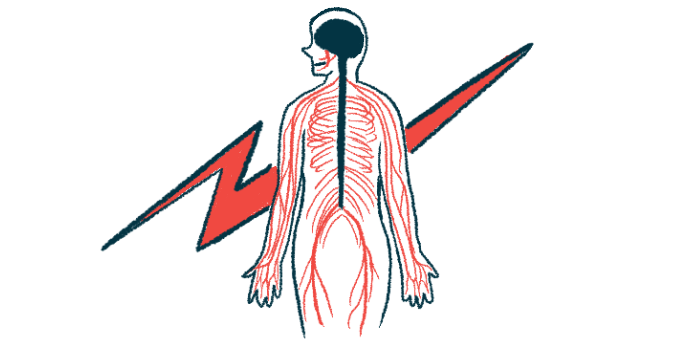Spinal taps can be given safely to ALS patients, small study reports
Interest in use growing with approval of Qalsody, injected into spinal canal

People with amyotrophic lateral sclerosis (ALS) are not at a higher risk of complications due to a spinal tap than are healthy individuals or those with other neuromuscular disorders, according to a small U.S. study.
Findings show that ALS patients have a relatively lower risk for such adverse events, with the most common side effect of a spinal tap, also known as a lumbar puncture, being headaches.
“Our findings demonstrate that [lumbar puncture] is a safe procedure for participants with ALS, with a similar or lower rate of [adverse events] than in participants without ALS,” the researchers wrote.
The study, “Lumbar punctures are safe in patients with ALS and have a risk profile similar to that in the non-ALS population,” was published in the journal Muscle & Nerve.
Spinal taps can be of help in diagnosing and monitoring ALS
A spinal tap often is given to people with ALS to collect a sample of the cerebrospinal fluid (CSF) — the transparent liquid surrounding the brain and spinal cord. The analysis looks for biomarkers that help in the diagnosis and monitoring of patients, as well as in assessing responses to treatments.
Qalsody (tofersen), a recently approved ALS treatment, also is given via an injection into the spinal canal, which is in many ways similar to a spinal tap.
The procedure has been deemed safe in people with neurodegenerative diseases like Alzheimer’s, but its safety in ALS remains unknown.
A team led by researchers at Washington University in St. Louis School of Medicine, partly because of Qalsody’s approval in the U.S., set out to assess whether ALS patients are at an increased risk of complications after a spinal tap. They conducted a retrospective analysis of people who had undergone a spinal tap, for research purposes, at the university’s ALS Center between 2015 and 2021.
In total, 233 people underwent a spinal tap during those years: 63 healthy adults, 154 ALS patients, and 16 adults with a neuromuscular disease other than ALS. The groups were fairly similar in their demographics, although the patient groups generally had higher rates of high blood pressure, psychiatric conditions, and headaches.
About one week after the procedure, participants were evaluated for adverse events by phone, and some events were reported by the person who did the procedure. Serious side effects were those requiring medical intervention.
Adverse events were reported to affect 49 (21%) of these 233 people — 18 (28.6%) in the healthy group, 28 (18.2%) in the ALS group, and three (18.8%) in the group with another neuromuscular disease.
The most common side effect was headache, followed by back pain and vasovagal response — fainting due to a problem in the part of the nervous system that regulates heart rate and blood pressure.
Three cases of headaches — one in each group — were deemed serious, and required a subsequent epidural blood patch. In this procedure, blood is injected into the site of the spinal tap to form a blood clot (patch), essentially “plugging” the puncture hole.
Serious risk of spinal tap complications not seen for ALS patients
Study findings illustrated that ALS patients were not more likely to experience adverse events after a spinal tap than other patient groups or healthy adults. In fact, the risk of a post-puncture headache was significantly lower, by about 64%, among ALS patients relative to healthy individuals, and among these patients compared with both of the other groups.
No link was found between adverse events and age, as well as with other co-existing conditions or comorbidities, like high blood pressure. However, women were significantly more likely than men to experience headaches after a spinal tap.
“Our study shows no increased risk of post-LP [lumbar puncture] complications in people living with ALS relative to controls. Instead, our data suggest that people living with ALS are at a relatively lower risk of developing post-LP complications,” the researchers concluded.
“Awareness of these findings could allow for better design of existing ALS research involving LPs and aid in discussions of LP safety with participants — with the goal of alleviating their fears … and improving patient participation. This is of particular importance as we move into an age of ALS therapeutics delivered via intrathecal [spinal canal] injection,” they added.







